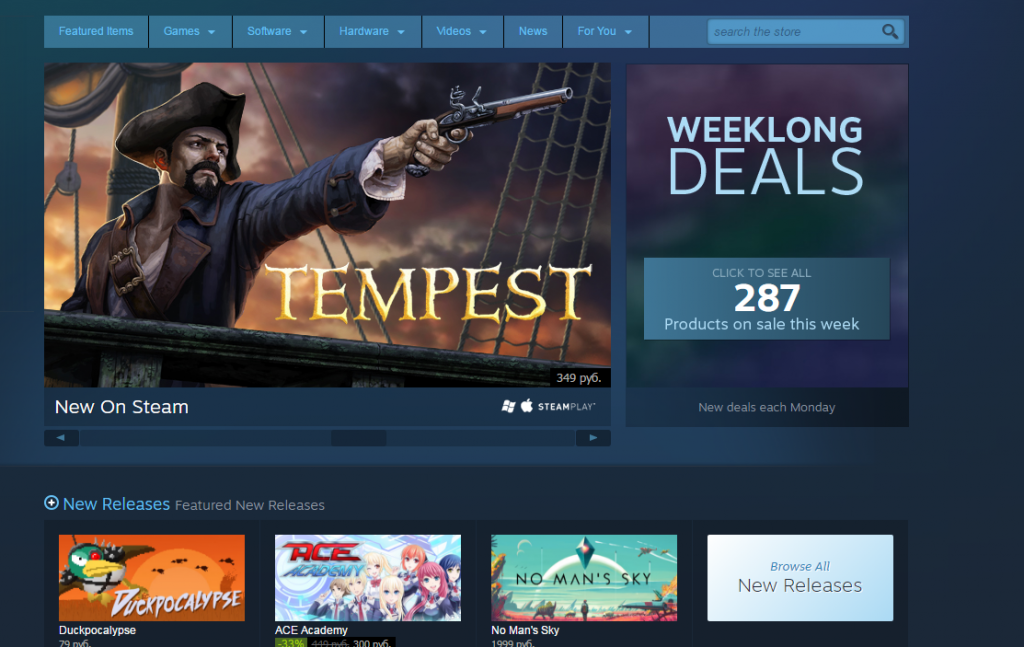A publishing company HeroCraft shared their promotion strategy on Steam taking “Tempest” game as an example.

HeroCraft covered all development expenses of “Tempest” game, they wanted to find out whether the players would like it or not as soon as possible. That’s why it was an Early Access launch with 80% of the functional part and 25% of content ready.
The future of the project depended on the results of its Early Access.
Ivan Pomytkin, head of PC publishing at HeroCraft, says, “The game was released on December 4th, a good time to launch a game on Steam, so “Tempest” got on Steam Winter Sale immediately. These days a game can’t be on sale during the first 30 days after its release. If you want to generate some good revenue in a relatively short period of time, then you need to launch a game at the end of September. In this case, the game will catch 75% of seasonal Steam Sales (Halloween, Autumn, Christmas) and Q4 will will end good from financial perspective.”
A game is sure to be promoted on Steam, and recently the featuring is very targeted. But all of this is being done automatically, in the best case scenario – partially automatically. If a game doesn’t earn not enough money according to algorithms, then the platform reduces the visibility of the game on the home page immediately.
“It’s much harder to get featuring now, but it’s worth it. For example, Daily Deal Sale, which lasts two days, can bring revenue equal to revenue of several months.”

Ivan also mentioned the basic terms of promotion from Valve,with importance in descending order. Some of them played a vital role in featuring “Tempest”:
- the game earns a lot already;
- it is very popular on Twitch;
- a lot of media coverage;
- demand for this genre / unsaturated niche;
- direct contact with Valve;
- interest from Valve.
“Tempest” didn’t have a lot of paid promotion during Early Access stage. According to Ivan, it wasn’t reasonable, “Media and influencers (streamers and bloggers) don’t usually post about such projects, in the best case scenario, all users will add the game to favorites.”
“In the West it is considered a high-risk idea to buy an Early Access title and arrange press coverage for it. There is an entire subculture, brought by Jim Sterling, who says that we shouldn’t spend money on Early Access, make pre-orders and encourage developers to earn on unfinished products. Many representatives of gaming communities and media think the same.”
But this doesn’t mean that HeroCraft didn’t work with them. The company actively promoted the project in media and on YouTube, social networks, forums and Steam itself.
“The most valuable thing to earn during the Early Access is a big loyal community. It’s hard to be interesting when you’re in Early Access. But we seemed to manage. Prior to the final launch, we released dozens of updates, patches, news, fixes and developer diaries, built a large community and improved relations with Valve. We made friends with a bunch of YouTubers and Rock, Paper, Shotgun, RPG Watch, Hardcore Gamer, Pirates-Life, Pirates Ahoy!, Coop-Land, and many others. And also we learnt a lot. That’s what Early Access is about – you can make mistakes and gain experience without ruining the product.”

Early Access sales dynamics on Steam
After a week in Early Access all development expenses were covered, despite the fact that the price was reduced – $11.99 and then raised up to $14.99 before the release. Most of the money was made on sales and updates. German and French localizations were the most profitable. During the first 9 months HeroCraft sold 21,000 copies during Steam Early Access only. The game was added to favorites by forty thousand people before the release, which made around 4,000 copies sold in future. After the release, this number has not decreased but doubled.
